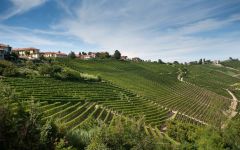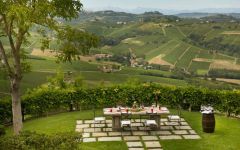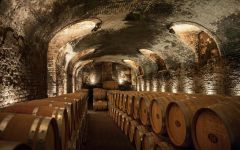Pio Cesare Cortese di Gavi 2022



Product Details
Your Rating
Somm Note
Winemaker Notes
Other Vintages
2023-
Wine
Enthusiast
-
James
Suckling
-
Wine
Spectator
-
James
Suckling
-
James
Suckling







Pio Cesare has been producing wine for more than 100 years and through generations. The tradition began in 1881, when Pio Cesare started gathering grapes in his vineyards and purchasing those of some selected and reliable farmers in the hills of Barolo and Barbaresco districts.
At Pio Cesare, there has always been a conviction that great wine can come only from the finest grapes and the winery's output has always been limited through adherence to the highest standards. Pio Cesare limits its production by using only the most mature and healthy grapes. The ripening of the grapes is carefully monitored and the harvest is rigidly controlled with each grape selected by hand.
Today, the estate is managed by Pio Boffa, great-grandson of Pio Cesare. Under his stewardship, the wines of Pio Cesare have become famous throughout the world. Great strides have been made in quality, and single vineyard offerings have dazzled the wine press.

First recorded in the early 17th century in the province of Alessandria in SE Piedmont, Cortese today is most highly regarded from Gavi where soils are limestone-rich. It also grows well in the surrounding zones, namely Monferrato and Colli Tortonesi. Somm Secret—Because of its freshness and chalky minerality, this white wine commonly populates the fish restaurants’ wine lists of the Ligurian coast so practically owes more allegiance to this neighboring region than its home.

Among Piedmont’s most historical and respected white wine producing zones, Gavi—also known as Gavi di Gavi and Cortese di Gavi—comes from Piedmont's southeast, in the province of Alessandria. Gavi is the main town of the area; Cortese is the grape. Cortese for Gavi is grown in any of 11 communes in the area where the soils are abundant in chalky, white, limestone-rich clay. The best Gavi from these locations are delicately floral, with stone fruit and citrus characters and a crisp, mineral-laden finish.
While typically made in a fresh and unoaked style, by law Gavi can come in many forms: frizzante, spumante, metodo classico and méthode ancestrale. But most producers maintain a conventional winemaking practice of temperature-controlled fermentation in stainless steel and make fresh, still whites. However, there are several barrique-aged examples, which can be interesting. The biodynamic wines of Gavi, fermented with ambient yeasts can be the most expressive.
